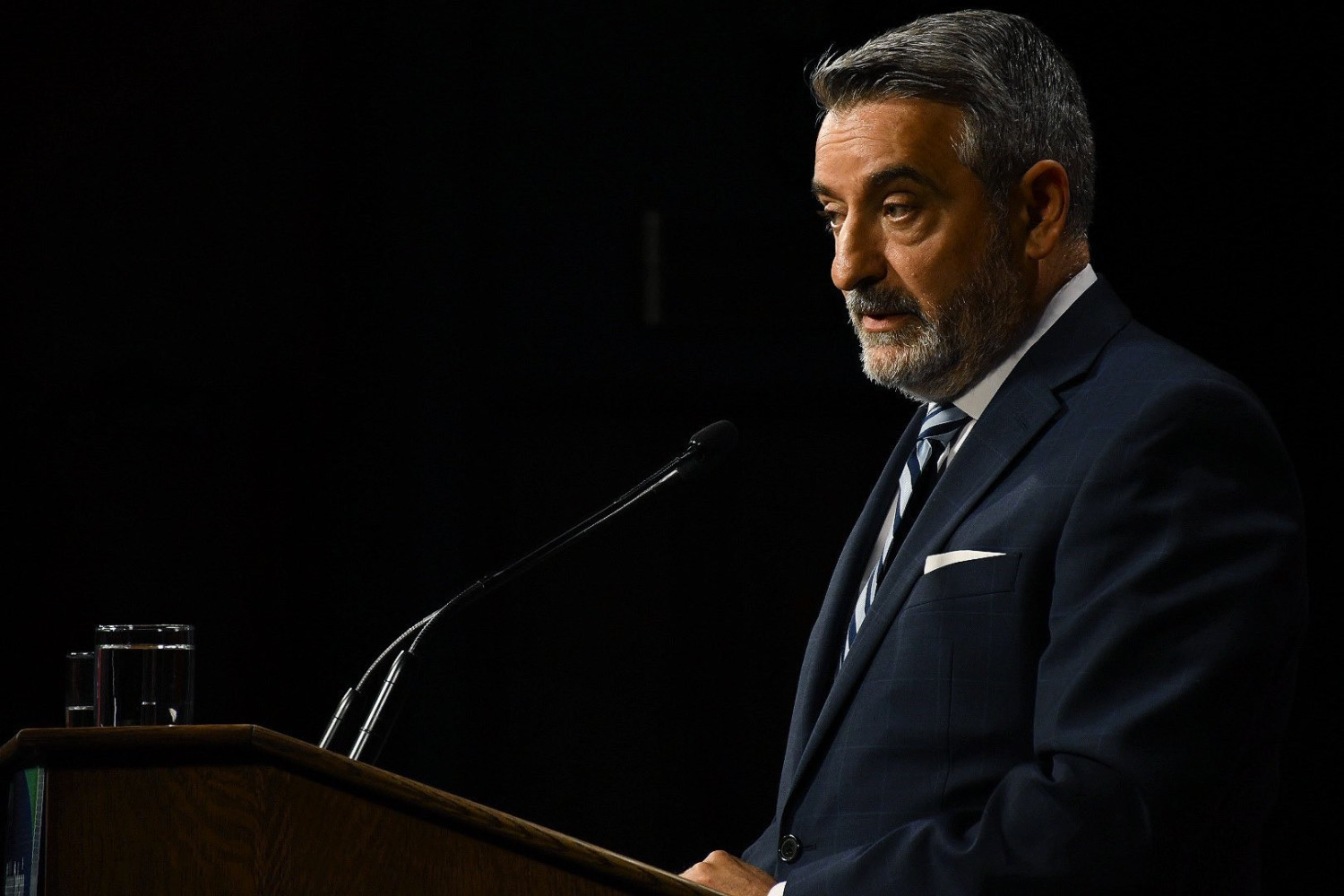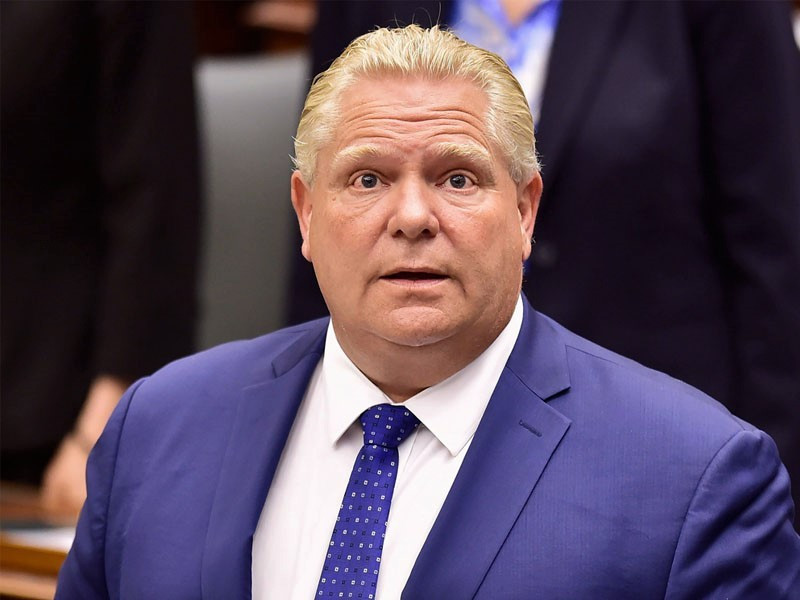
Province suggests it will cover bill to Region of Peel for work on dissolving the upper-tier government
The last year left staff at the Region of Peel, elected officials and residents in a state of limbo following Premier Doug Ford’s decision to dissolve the upper-tier municipal government. He then nixed the plan and Minister of Municipal Affairs and Housing Paul Calandra instead proposed downloading only certain departments to Brampton, Caledon and Mississauga.
This would “keep costs down for taxpayers.” He said the new approach would “provide certainty and stability for taxpayers” in Peel “while continuing the province’s efforts to provide the best value for taxpayers.”
Adding to the mounting frustration among staff and elected officials, earlier this year the Province saddled the Region with a $1.5 million bill for the provincially appointed Transition Board, now meant to provide recommendations on the transfer of land use planning, water and wastewater, regional roads including stormwater, and waste management from the Region to its three lower-tier municipalities.
In May, regional council passed a motion requesting the Province fully fund the costs associated with the work of the Transition Board, noting “no other Regional Governance review exercise is being funded by the Regional Government under review.” It requested the Transition Board “provide a complete and detailed breakdown of [the] invoices” and that the Board “provide information on third-party consultants they have hired and the associated costs.”
According to a subsequent letter from Regional Chair Nando Iannicca to the Province, while the original Act to dissolve Peel Region contained provisions that required the Region to pay the costs of the Transition Board, “it is the view of Regional Council that the associated costs should be paid by the Province and not solely by Peel Region property taxpayers.”
“The decision to dissolve Peel did not originate from Regional Council, however, this exercise has had a significant impact on the organization, both on its staff and its finances,” the May 15 letter stated.
The Transition Board has billed the Region $1.5 million in two separate invoices — $858,332 for costs incurred between July and December, and $635,137 for costs incurred from January for its work up until March 15th of this year. The Region has also incurred an additional $2.7 million in costs to address the abandoned Bill 112 (the Hazel McCallion Act) that sought to dissolve Peel Region, including “maintaining business continuity, and supporting the work of the Provincial Transition Team” — a task that became increasingly difficult for the Region as hundreds of staff departed in wake of the initial dissolution announcement last May. A spokesperson from the Region told The Pointer in an email that should the additional $2.7 million not be covered by the Province, the Region will utilize tax stabilization funds.
“Peel Region property taxpayers expect transparency for every property tax dollar that is spent by Peel Region,” Iannicca stated in his letter to the Province, which adds that while the Region “appreciates” the cost breakdown of the two invoices provided by the Board, “a similar breakdown of costs associated with its third-party consultants should also be disclosed to enable a full accounting of the Transition Board’s costs and promote transparency.”
A statement from the Region following the May motion pointed out that while Peel is required to fund its transition process, other regions are benefitting from a provincially funded public consultation process through the Standing Committee on Heritage, Infrastructure, and Cultural Policy.

Housing Minister Paul Calandra has indicated the Province is open to covering the costs associated with the Transition Board.
(Government of Ontario)
The latest letter from Minister Calandra, featured on the most recent Regional council agenda, indicates the Province may cover some of the costs associated with the Transition Board.
“The work of the Transition Board on water and wastewater may help unlock the opportunity to scale up transformative ideas to Ontario's other fast-growing areas and bring additional infrastructure capacity online,” Calandra stated in a letter received by the Region on June 12 (it is unclear when the letter was dated by the Province). “This is why I have indicated that, where the Transition Board's final recommendations help enable transformation in other regions, the government remains open to offsetting the relevant costs and helping ensure fairness for the Region of Peel.”
While Calandra’s letter states the province “remains open” to covering relevant costs associated with the Transition Board and Regional dissolution, the details on what will be covered are unclear. The letter references the $1.5 million in invoices but does not acknowledge the additional $2.7 million in costs incurred by the Region over the past year.
Since regional separation was initiated last May, Ford has promised transparency for Peel’s taxpayers, but the PCs flip flopping has created anything but transparency.
Ford repeatedly assured the upper-tier municipality’s transition would be “a plan that will ensure fairness and stability for the residents of Peel,” but he did the opposite, leaving the Region in the dark while officials pleaded for transparency so Peel staff would not have to live with so much uncertainty about their future.

Premier Doug Ford’s plan to dissolve Peel Region has led to millions of dollars in costs for local taxpayers.
(The Pointer Files)
In January the Province said it would be reconfiguring the mandate of the Transition Board to “focus on making local government in Peel Region more efficient and responsive to the needs of residents and taxpayers.” In the same breath, Minister Calandra said the Board would be reviewing four Regional services “key to building homes and housing-enabling infrastructure.”
The Transition Board has been responsible for providing recommendations on the transfer of each of the services currently provided by the Region, to the three lower-tier municipalities with the goal of increasing housing supply; reducing duplication and removing layers of bureaucracy from the administration of services; while ensuring the continuity of services for local residents and financial sustainability.
A spokesperson from the Minister’s office told The Pointer on Tuesday the Province has “received interim recommendations from the Peel Region Transition Board” and “are reviewing the interim report and look forward to receiving the final report due to the Minister in [the] summer.”
Email: [email protected]
Twitter: @mcpaigepeacock
At a time when vital public information is needed by everyone, The Pointer has taken down our paywall on all stories to ensure every resident of Brampton, Mississauga and Niagara has access to the facts. For those who are able, we encourage you to consider a subscription. This will help us report on important public interest issues the community needs to know about now more than ever. You can register for a 30-day free trial HERE. Thereafter, The Pointer will charge $10 a month and you can cancel any time right on the website. Thank you
Submit a correction about this story


